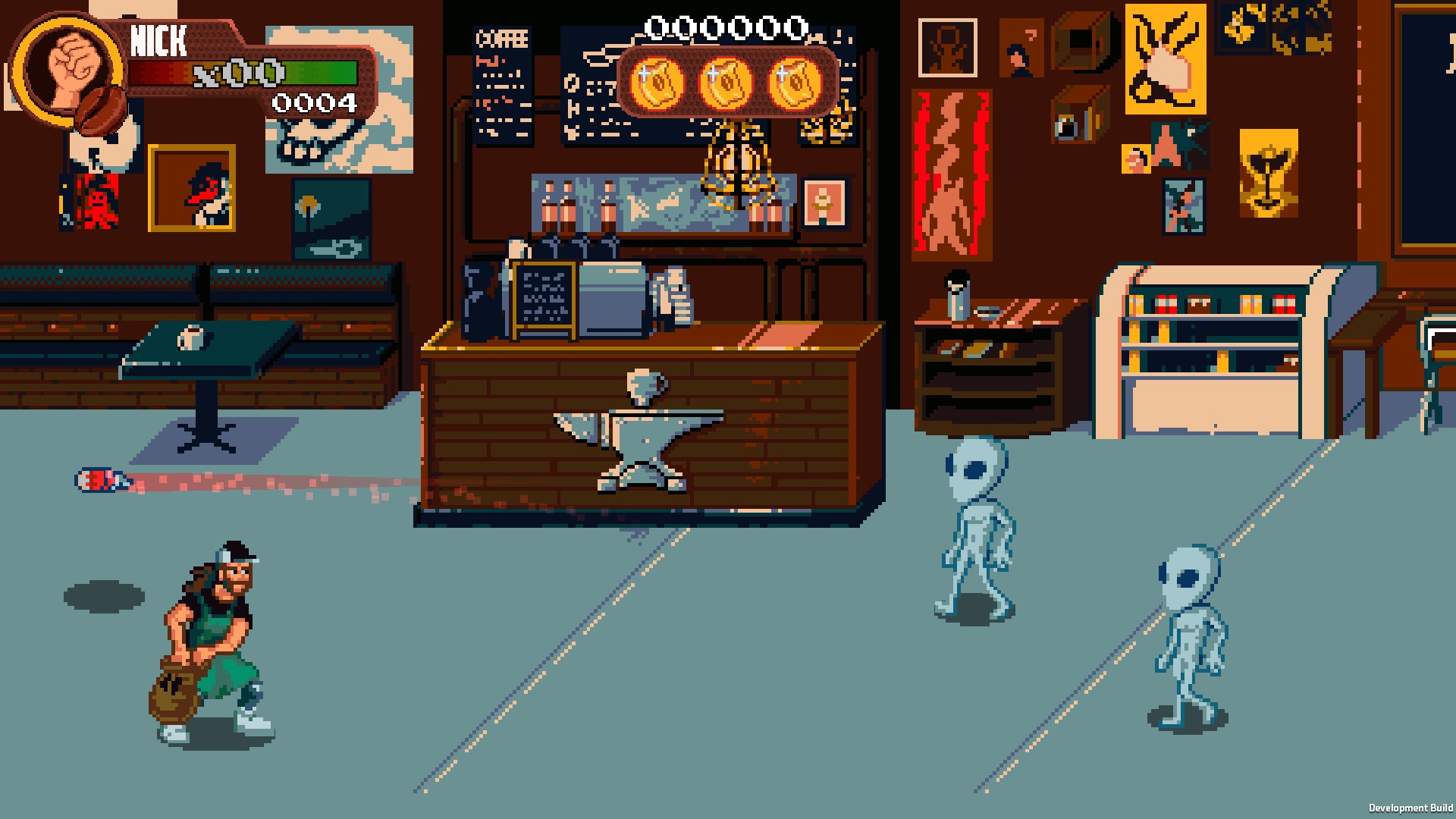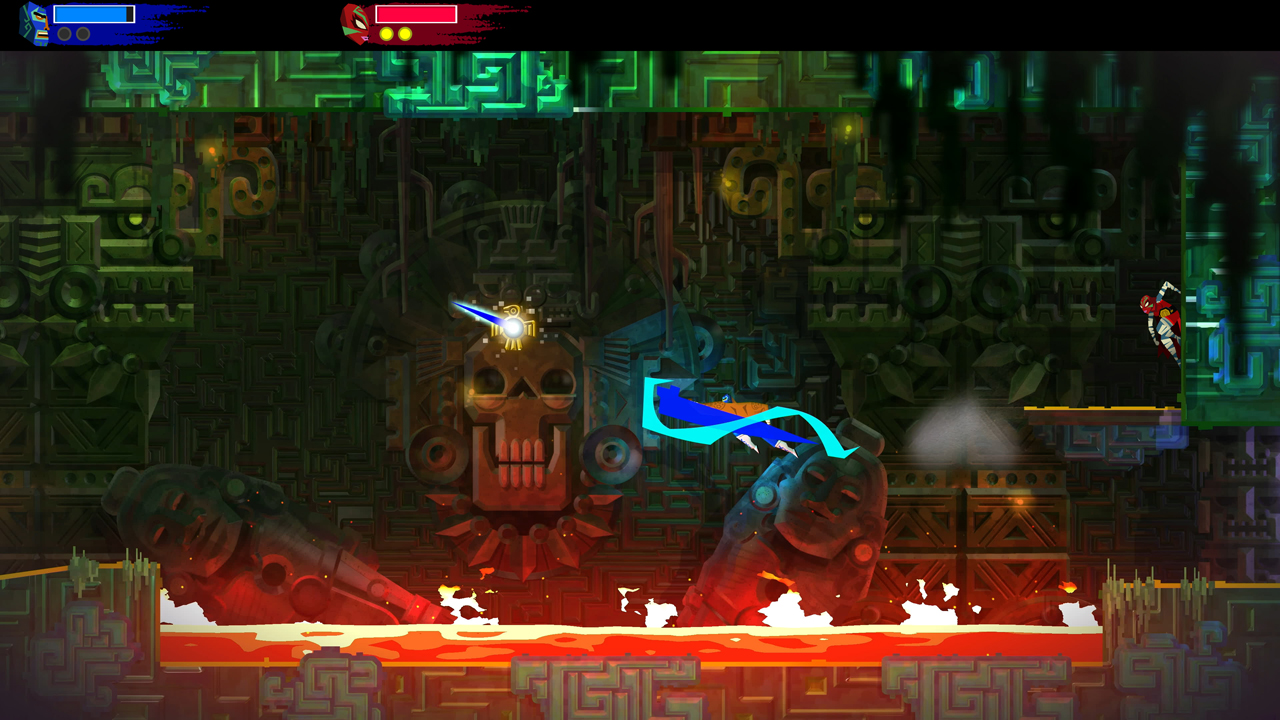Indie Games And The Love Of The Retro Aesthetic
Hitting the history books for some good old-fashioned fun.

Speaking of the original Godzilla movie, film historian and writer David Kalat once pointed out that it isn’t the contemporaries of filmmaking who went on to make giant monster movies. Instead, it was the kids in the audience who saw Godzilla and were so affected and enthralled by it that years later it formed one of the reasons they went into filmmaking. There’s no doubt that the same holds true for video games.
Kids who grew up on ’80s/early ’90s consoles, coin-ops, and home computers took those experiences and memories with them into adulthood. Some of them even learned to code and create their own games. While the impact this era of gaming had on major AAA development is undeniable, it’s the indie developers who truly keep the flame lit for the aesthetics of gaming’s early days.
The amazing success of games like Braid, Fez, and Shovel Knight prove that nostalgia sells. Since the release of these landmark titles, there has been an incredible explosion of both independent and even large scale development games replicating the aesthetic of classic gaming history. Gamers are clearly into it, as well. While the big players like Nintendo and Ubisoft certainly still make side-scrollers with old-school sensibilities, it’s been indies keeping nostalgic players well stocked with retro kicks.
Creating games based on a nostalgic love requires deep diving into what made those games so resoundingly special in first place. For Matt Raithel, Studio Director of Graphite Lab, makers of the recently released Hive Jump, it’s the scaled-back focus on good gameplay that drew development back to the 80s. “I grew up in that era. So, in my case, some of the appeal is probably nostalgia creeping in,” Matt tells us, “something else to consider that is more universal is the general simplicity of games back then. The hardware and tools were less robust so the experiences (though amazing for the time) were simpler in nature.”

The concept of hardware limitations was a huge part of game development in the 80s. There was nothing like Unreal or Unity to give creators a huge leg up. Raithel cut his teeth developing Gameboy Advance games in the 90s and explains that “if our game needed a UI system or a state machine or a particle system, we were building those from scratch.” Pre-made tools, hordes of tutorials, and a huge community of other developers mean modern game crafters can experiment more and find support far easier than their industry predecessors.
Megacat Studios revel in the role hardware played in the games of yore. They release new games on cartridges for the NES and Genesis in addition to modern consoles. With games like the just-released Coffee Crisis, they don’t just pay tribute to retro classics like Final Fight and Streets of Rage – they create modern day bubbles of the past.
It’s not just the formal aspects of classic gaming that modern developers are seeking to replicate; there’s a thematic family tree that’s continuing to take root today. Causal Bit’s Christopher Obritsch made quite a splash lately with the heavily Ghosts n’ Goblins-inspired Battle Princess Madelyn, so his love of retro gaming is obvious. To him and other developers, the 8 and 16-bit era represent the “Golden Age” of gaming. “It was a time where you were still partially forced to use your imagination to fill in the gaps,” he explains. “Games still felt like games back then and not some escape from reality. There was still a line. Now you’re ‘submerged’ into another character’s life.”
“(Classic games) entertained us with good content, memorable characters, and beautiful art,” Megacat’s Zach Manko said. “Not bells and whistles like dynamic beard growth and thousands of cosmetic upgrades. For us, creating genuine retro games and modern games that pay homage to them is part love letter, part personal challenge.” For Manko and Obritsch, then, much of the appeal of the retro aesthetic comes in the form of a departure from prescribed experience. Many of today’s triple-A experiences are obsessed with the real, constantly seeking to replicate the textures and light behaviour of reality. Classic games, in contrast, occupy a unique space of candor: an acknowledgement and ownership of the reductive pixel visuals they were working with to wring every last drop of imagination from the mind of the player. Making retro-fueled games, as it turns out, could be seen as an almost counter-cultural move against the overt complexity, size, and obsession with visuals that signify a AAA title.

Modern retro games are usually after a feel and a look of nostalgia, while understanding that not everything about 1980s game design translates to the present day. When asked about what our retro indie developers felt were the most outdated concepts in game design and mechanics, how modern games handle player death was at the top of the list. “(Dying was) a holdover from arcade games that were designed to take your quarters,” Manko explains. “If dying doesn’t have any real effect on your character or progress, other than to make you sit through some Game Over screens, it really doesn’t serve a purpose.”
Obritsch places such discussions in a starkly modern context to show us just how much has changed under our noses. “Take Call of Duty, where you can hide behind a wall for a few seconds and recover from mortal wounds. Could you imagine how people would react if they were given limited lives in that game online?”
Modern games shy from such blunt difficulty, a development most concretely demonstrated in save functionalities. Generous auto-saves are a stark contrast to classic games’ penchant for forcing players to constantly restart entire levels (or the whole game) upon death. But back in the day, death played a crucial role in the video game industry and individual design itself.
The coin-op arcade legacy of so much of the 80s and 90s gaming scene is undeniable. 80s gamers were constantly questing for an “arcade quality” experience at home. The Atari 2600 let us play Space Invaders, Donkey Kong and Pac-Man from a comfy armchair but then the ColecoVision came out with substantially more graphical polish to better emulate the arcade experience.
A few years later, the Nintendo Entertainment System and Sega Master System would fight a similar battle over, believe it or not, Double Dragon – the killer app of the mid-80s. Now, most gamers view arcade ports as curiosities, brief nostalgic trips between more substantial games. Simply put, no one is paying $60 (or in the case of the 80s, more) to play an arcade game with a design focus of up to 20-minutes of quarter-eating.
Today, creators have found plenty of ways to leverage that frequently brutal and unforgiving old-school design mantra with modern amenities. Drinkbox Studios has been doing this for years, especially with the brilliant Guacamelee series. This Mexican-flavored saga features endless lives, a growing health bar and light RPG-like progression elements. It also sports some of the most brutal and exacting side-scrolling platformer challenges out there.

Gary Corriveau, Lead Designer at Drinkbox Studios, is an obvious fan of the old-school mechanics and, crucially, knows when to put them to work in the modern age. “Everything can work depending on how you put it to use,” he says. “There are often specific expectations based on popular games of the time, but there are always new games that subvert those expectations in clever ways and create something wonderful.”
Retro-inspired developers carry an array of motivations for creating their old-school experiences. Nostalgia and a love of classic gaming are often found at the top of the list; however, there are more functional realities fuelling the rise of nostalgic video games. Budgets and the realities of making a game with a small team (or alone) make simple pixel art and sprite aesthetics infinitely more appealing, if not necessary. More than that, the need to create something personal, something that a creator felt they weren’t getting from anywhere else might be the biggest driver.
“For me, it’s not even about paying homage, it’s making things I still want to play when no one else does,” Chris Obritsch explains. “In my head, a real video game is still low res (320x240ish) with bright colorful pixel art popping out at you in every scene and butter-smooth 60fps controls.”
While many might just take that retro pixel art style for granted, for indie creators it has incredible value. Zach at Megacat summed it up best. “Pixel art is synonymous with video games. It’s a big part of the ‘mythology’ of video games,” he says. “Hand-drawing every frame is far more artistically intensive than programmatically animating a 2D model. So, lovingly created works of pixel art serve as a testament to the appeal of the 16-bit art style.”
